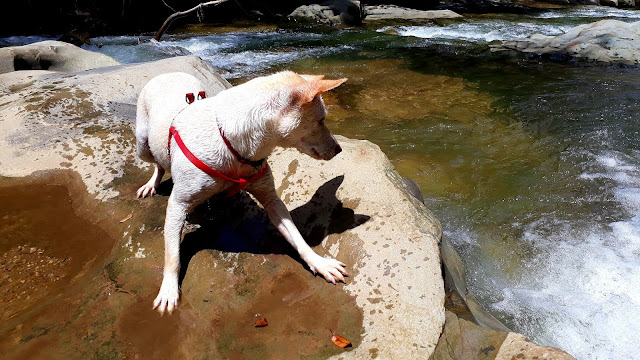Headhunting for the Ibans is history. But many a question still lingers in the minds of many as to why headhunting was rampant or to some extent ‘cultural’ among them. Part of this article explains why.
“Heads are very important because they are needed for many occasions. If your loved ones die, only the coming of freshly cut heads will stop the mourning period. You know that when we are in mourning, nothing we do will be blessed. Heads are also required to bless our longhouse. The more heads we have, the more plentiful our harvests will be. They will also guard our longhouse from evil spirits. During our many festivals, our women carry the heads up and down the verandahs or galleries to show of the bravery of their fathers and their brothers. No maiden will give you even a glance if you have not obtained a single head.”… Jimmy Donald, Keling of the Raised World pg. 5
Dato Sri Empiang Jabu in her article ‘Historical Perspective of the Iban’ in The Sarawak Museum Journal (December 1989 issue) writes on pg. 25 in support of the above notion. “… The practice of headhunting being the most talked honoured tradition of the Iban of those days was the crowning proof of manhood. Marriage for young Iban then would come easily with the proof that a man has taken heads in war. Coupled with a war-like spirit was a belief in the magical powers of the human heads. Heads were believed to bring strength, virtue and prosperity to the longhouse and it was the object of every young warrior to bring back a head to adorn his longhouse…”
However, the Iban first started headhunting not because they loved to do it or for the sake of treasuring the heads as trophies back home. It was because from time immemorial with the absence of proper law and order with regards to other tribes, people killed one another. Such thing was common elsewhere, in every part of the world when no proper government existed. Fine examples of this were the Jahiliah Arabs (Period of the Dark Ages) before the coming of Islam to the Middle East and the periods of the Warring States in China both during and after Confucius time.
The Ibans, like other brave ordinary people, had to defend themselves. Long-long time ago Ibans were always victims of attacks by another Borneo tribe known then as Kantu but later learned to defend themselves and turned the table against the attackers. Being born brave (or taught to be brave) the Ibans not only killed their enemies in war but took the heads to appease the spirits of those fellow Ibans killed by the enemies.
Even before the Brookes showed up, the Ibans had already engaged in headhunting simply because during the migratory period they met with a lot of hostility. Iban early immigrants from the Kapuas basin in Kalimantan to Batang Ai and subsequently to other parts of Sarawak came into contact with other people who attacked them and fled. Many Ibans were killed in this nature. Prominent among their attackers were the Bukitans or locally known as Baketan, now an extinct tribe.
Empiang Jabu uses the story of Beti nicknamed Brauh Ngumbang (Loud Yell) and a girl named Remampak to cite one example of the Baketan attack. Beti avenged the mourning Remampak for her slain father by killing and taking the head of the killer who happened to be the leader of the Baketans.
This shows Iban deeds were always based on logical and practical reasons. As such this background has given birth to an important, albeit a notorious part of Iban culture. In order to survive, Ibans of old had to continue the headhunting and found in the practice the usefulness of the heads both in their spiritual and their socio-political world.
In another word, headhunting to the Iban was an integral part of survival in the anarchic scenario of ‘kill or be killed’. If they (the Ibans) did not practise the headhunting their enemies (always those who came into contact with them in new territories), then they would be attacked first by the other tribes. Demonstrating their pragmatism, the Ibans preferred to attack first rather than bear the consequences of being unprepared.
For adventurer James Brooke who landed on Sarawak soil on 15 August 1839, it was really a bad timing and unfortunate. Coming to the scene at this particular time – he came uninvited – served him right.
Sir James Brooke, Sarawak’s first Rajah (1841-1868) was the first to use the term pirates upon rebelling Ibans. Though the Dutch rulers of Sambas in Indonesian Borneo and the Brunei Sultanate never referred to the Ibans as pirates, Brooke’s use of the term was to serve his own purpose. Foreign authors such as Pringle, Runciman and others who wrote on the famous Battle of Beting Maru in 1849 termed the Iban war party under Linggir ‘Mali Lebu’(Never without conquest) as pirates, basing their information on records made available to them by the Brookes Government.
Iban side of the story were never told for public consumption. Were they in any sense pirates? Definitely not. There were plenty of pirates in the area then such as the Sulus, Illanuns, Natunans and others but not Iban. To describe Iban practice of headhunting as piratical is an insult to the language.
Some Saribas Ibans did go on headhunting activities searching for their enemies along the coast, sometimes paddling beyond Beting Maru, even as far as Sambas in Indonesian Borneo but it did not merit them to be converted into buccaneers. History supports the fact that Iban boats were too meek for any piratical activities. Linggir and his men were not ignorant of the fact that their boats were nothing compared to those used by the real pirates. And they were not even comfortable with the seas.
*source- mySarawak.org





































